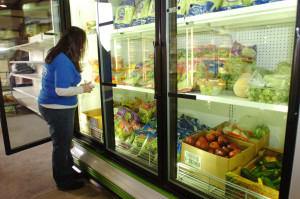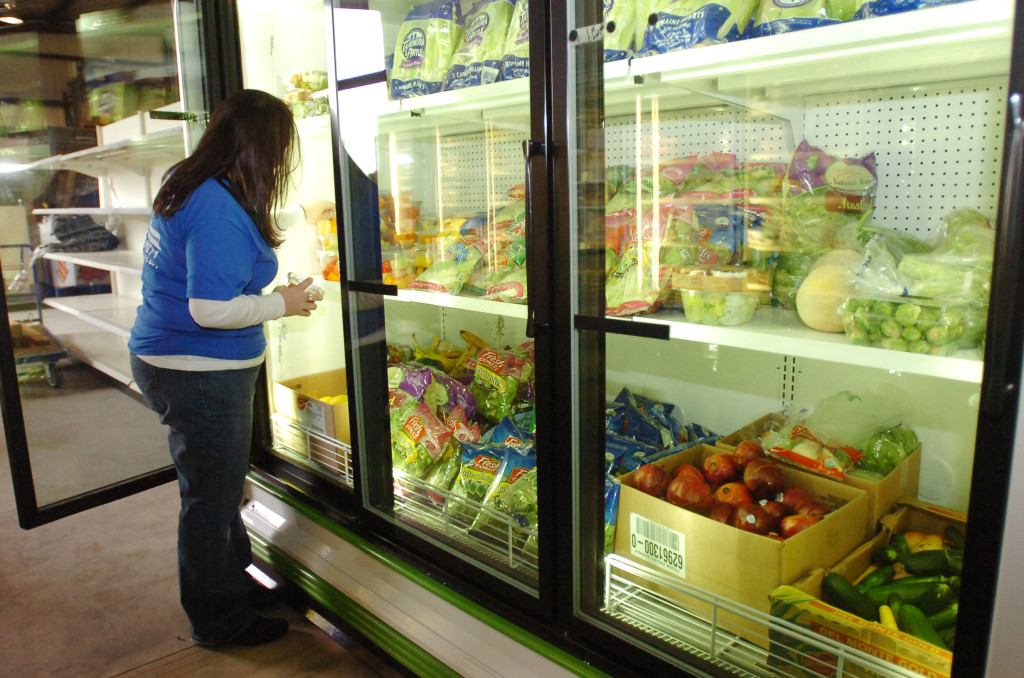>> I’m watching the woman ahead of me in line at the grocery store. She has two young children with her and a basket full of food. Her hands tremble as she waits to see if her account has enough money to pay for it all.
I’m watching the woman ahead of me in line at the grocery store. She has two young children with her and a basket full of food. Her hands tremble as she waits to see if her account has enough money to pay for it all.
As a young mother, I knew this moment all too well. You’ve kept track of every item, adding it up in your head, and consider what you can put back if the total is too high. You hope the person behind you will be patient and understanding if you hold up the line.
I sigh in relief with her as her receipt prints out — “approved.”
Food insecurity is an ongoing problem in North Carolina. We are ranked >>fifth in national hunger rates and, with nearly 30% of residents struggling, >>Greensboro-High Point is the worst ranked metropolitan area in the United States for food hardship. According to the >>Meal Gap Mapping Tool , we have over 1,800,000 people who experience chronic hunger. >>Data on NC poverty indicates that women, particularly those with children, are impacted at significantly higher rates. This is appalling.
The issue of domestic hunger is one that will require policy and programming at local, state and national levels. In the long-view to eliminating food hardship, structural changes around wages and barriers to economic improvement must be made.
The North Carolina Association of Food Banks recently >>joined with 126 other groups across the nation to sign a letter urging the National Commission on Hunger to design a “bold and comprehensive plan” to alleviate food insecurity. Their suggested three-pronged approach has potential to incorporate individual, governmental, and private sector efforts to develop a sustainable strategy to alleviate hunger.
Right now, though, we are facing a crisis. Stabilization is crucial.
Recently, the State Employees Credit Union signed a >>$1.2 million dollar agreement with Feeding America that will add an additional six million meals to the state’s food banks over the next three years.
Feeding America has declared September >>Hunger Action Month . All month long, they will be advocating and raising awareness around this issue. On September 3rd, they are asking that everyone take at least one action for Hunger Action Day, and have an extensive resource list of ways to get involved.
If you need a little more time to plan, >>October 16th is World Food Day and the Food and Agricultural Commission of the United Nations is urging people to work at a local level to promote food equity in their communities.
Remember, too, that the need and urgency doesn’t expire after designated action days. We can find ways to be a part of alleviating hunger in our daily lives. Donate food or volunteer time to a food bank or other agencies, ask local vendors to accept SNAP or EBT benefits.
And try not to forget that even if you can’t see it, hunger is everywhere. It’s not just the woman holding up the grocery line or the family standing in line at the food bank. One out every five North Carolina children doesn’t have enough to eat. Those empty bellies are ours to fill, and we must never forget it.

There are no comments
Add yours